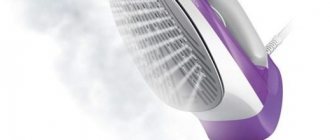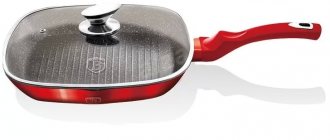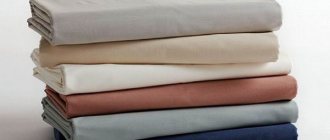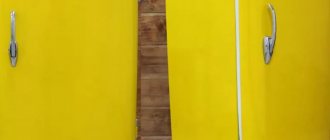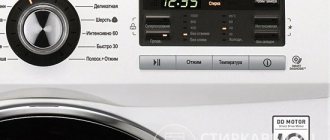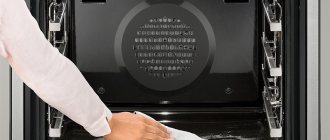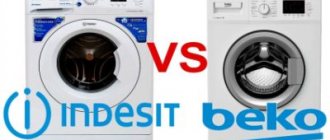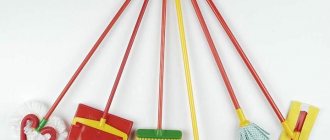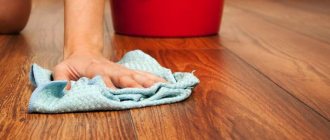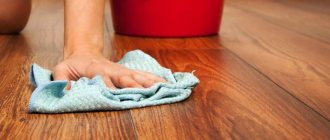The soleplate of the iron is an important part of the device. The sole becomes damaged due to friction, becomes damaged and becomes unusable. Over time, even the most durable iron sole wears out, which leads to the formation of creases, scratches, stains and other mechanical damage.
There are several types of iron soles:
- aluminum sole;
- stainless steel sole;
- ceramic sole;
- titanium coating;
- composite sole.
Choosing the shape of the iron sole
Experts emphasize the importance of the correct shape of the soleplate of the iron. The equipment must have a narrow spout for ironing hard-to-reach places. A bonus will be the presence of steam holes in the nose of the iron.
Then ironing becomes much easier. If the iron is most often used for ironing bed linen, shirts and children's clothing, then the choice should be an iron with a wide sole, which allows you to maximally grasp the surface of the fabric the first time.
- The narrow soleplate of the iron is suitable for specific clothes with a complex cut, when it is necessary to iron a lot of frills, folds and ruffles.
- The back of the sole should also have a rounded shape: then when ironing the fabric back, there will be no folds or creases.
- Some manufacturers (eg Panasonic) make the soleplate of their irons double-edged (with narrow tips on both sides).
- The gap between the sole of the iron and the edge of the platform is also important so that the iron can freely iron the fabric between the buttons. The material of the sole is no less important.
Steel or ceramics?
In modern irons, steel is the basis of many types of soles, onto which coatings such as polytetrafluoroethylene or titanium, for example, are applied. In the case of applied materials, the main properties of ironing will depend on the coating, and the physical characteristics will depend on the base. Therefore, sprayed steel soles are often particularly durable, wear-resistant and easy to glide, but at the same time they weigh a lot.
When steel is both the base and the working surface, its physical characteristics are the same as those of irons with a stainless steel soleplate. Therefore, when choosing between steel soles and ceramic ones, it is also necessary to take into account the cost and properties of coatings, if any.
Ceramic and metal-ceramic sole
Ceramic coating on the soleplate of an iron is quite common. To solve the problem of material fragility, an admixture of chromium and nickel is added to the ceramics, and steel or aluminum is used as the base of the sole. Such alloys are called cermets (Tefal irons).
In its pure form, ceramic coating is extremely fragile and easy to break, so ceramics are always reinforced with metals.
Advantages of a metal-ceramic sole:
- Doesn't wrinkle clothes.
- Does not get stuck in metal fittings.
- Easy to clean.
- Glides great.
- Reasonable price for the iron.
However, over time or if accidentally dropped, part of the soleplate may break off, rendering the iron unusable.
User voting
Which iron would you choose or recommend?
Braun TexStyle 7 TS745A
50.00 % ( 2 )
Bosch TDA 702421E
0.00 % ( 0 )
Polaris PIR 2186
0.00 % ( 0 )
Redmond RI-C263
0.00 % ( 0 )
Braun SI 3041 GR
0.00 % ( 0 )
Kitfort KT-2601
0.00 % ( 0 )
Philips GC4595/40 Azur FreeMotion
25.00 % ( 1 )
Panasonic NI-E610TVTW
25.00 % ( 1 )
Panasonic NI-E510TDTW
0.00 % ( 0 )
Braun TexStyle 7 TS775TP
0.00 % ( 0 )
Philips GC5039/30 Azur Elite
0.00 % ( 0 )
Bosch TDA 2315
0.00 % ( 0 )
Sinbo SSI-6612
0.00 % ( 0 )
Home Element HE-IR219
0.00 % ( 0 )
Aluminum iron sole
Aluminum irons remain one of the most affordable. It was with aluminum that the revolution in the production of modern soles for irons started.
"Pros" of an aluminum sole:
- Heats up quickly and cools down quickly. There is no need to wait long until the iron is ready for use.
- Aluminum glides easily.
- Light iron.
Among the disadvantages of this model:
- The rapid appearance of scratches, which complicate ironing, clinging to the surface of the fabric. The first scratches appear on the sole after 6 months of using the iron.
- It is impossible to iron woolen fabric without a special attachment.
Bosch TDA2325. High quality steam
The German representative TDA2325 has a steam generation function and a simple design that everyone can understand. This iron can answer an important question: ceramic or cermet? TDA2325 will tell you which is better. This device is designed for high-quality dry ironing and easy gliding over the surface, which only reliable metal ceramics can provide.
A regulator is installed that controls the steam supply. Combined with it is a rod that performs a self-cleaning function. In addition to this, the iron is also cleaned through the Palladium-glissee soleplate itself.
The power is average, 1800 W, which is quite enough for normal ironing of even difficult surfaces. The water reservoir is completely transparent, which allows you to control the liquid level. In addition, a special scale is applied to it. Steam is supplied vertically, which allows it to penetrate deep into the fibers of any type of fabric and provide more thorough ironing.
The design and technical components of the TDA2325 are designed for frequent and uninterrupted operation of the device. Of the minuses, you can only indicate the average power. This is sometimes reflected in negative consumer reviews. But the quality of Bosch has been deserved over the years and has virtually no complaints. The price is more than affordable and starts from 2000 rubles.
Stainless steel irons
Stainless steel has become the most popular of all materials due to its affordability, high performance and durability. The surface is not afraid of chips and scratches, is not prone to corrosion, and also heats up evenly in a short time.
In an effort to improve the performance of stainless steel irons, manufacturers began to add other additives to the metal (chrome and sapphire powder), which takes the performance of steel to a new level.
Experts note the considerable weight of a steel iron, which is more of a “disadvantage” of the product, since using a heavy iron for a long time will be quite difficult.
Teflon coating
Absolutely everyone has heard about the wonderful properties of Teflon frying pans: it is almost impossible to burn anything on the surface of the Teflon coating. It is for this reason that this material began to be actively used in irons.
- The non-stick coating is applied over a steel or aluminum base, making the surface of the appliance smooth.
- The iron sole glides easily, smoothing out even the most difficult wrinkles. The coating is easy to clean, and it is almost impossible to burn fabric on Teflon.
- Teflon soles allow you to iron even light fabrics at low temperatures.
However, experts point to a major drawback of Teflon - the fear of metal fittings, which can damage the coating, and the Teflon will gradually begin to crumble. In addition, scratched Teflon will stick to fabrics.
Trying to eliminate such “cons”, iron manufacturer Braun invented the Sapfir series - Teflon irons coated with corundum powder (sapphire powder). The sole becomes resistant to scratches and chips.
Main characteristics
The main indicator is the quality of the surface itself. There should be no visible protrusions, depressions, chips, cracks, scratches, burrs, darkening or white spots. A non-smooth surface will tear delicate fabrics and leave puffs on dense materials.
On a note!
You can evaluate the quality of the surface by examining the edge of the part. If the coating on it is even and the metal base is not visible, it means that the entire element was produced in good faith. In cheap models of irons and fakes, burrs and delamination of the coating are visible here.
The main criteria for assessing this element include:
- uniform heating;
- ease of care;
- ease of gliding without effort.
Some manufacturers also indicate that their models are most delicate in contact with any type of fabric. That is, the fibers do not melt, do not shrink, do not tear, and the fabric structure itself does not deform. Outwardly, all this is expressed in stretch marks, shiny areas on ironed things.
The ease of sliding depends on the material, the method of its processing, and the precision of grinding. The base of the iron should heat up quickly and evenly, and also quickly release heat if the temperature drops. If certain areas heat up faster than others, the iron will get stuck on the surface and the ironing process will be delayed. If the material has insufficient thermal conductivity, when the temperature drops or switches to another mode, there is a risk of simply melting more delicate fabrics.
Titanium sole for the premium segment
Titanium irons are considered the most expensive, which is not surprising: the durable and reliable material has long been used in the space industry. Titanium combines the best qualities of aluminum and stainless steel:
- High degree of reliability.
- Persistence. Titanium cannot be scratched even on purpose.
- Ease of sliding.
- Easy to remove carbon deposits even from a hot iron.
Among the disadvantages of titanium coatings, it is worth noting the high weight of household appliances and their high cost.
Branded technologies
- The Braun corporation created Eloxal technology, where the irons were equipped with an anodized aluminum sole: the metal is doused with an electrolytic composition, giving the sole anti-corrosion properties, resistance to deformation and protection from overheating when operating at elevated temperatures.
- Phillips also offers the market its unique Steamglide project (in the sole of the iron there are additional holes for steam, creating a steam cushion for nasty sliding on the fabric). The base of the sole is alloy steel, but glass ceramics are also found.
- Popular Tefal. Durilium – metal base with ceramic coating ensures smooth running and scratch resistance.
When choosing an iron sole, it can be quite difficult to make a choice, so some brands offer irons with removable soles that can be changed depending on the type of fabric.
Ceramics or metal ceramics?
The main disadvantage of a ceramic sole is fragility. Otherwise, it has a lot of advantages:
Smart iron REDMOND SkyIron C288S
3 999 ₽
2 999 ₽
Add to cart
- ease;
- delicate ironing;
- comfortable easy sliding;
- easy cleaning.
The ceramic-metal sole has all of the above qualities and is resistant to damage and even falls. Therefore, in the question of which sole to choose from these two, the answer is obvious - metal-ceramic. Yes, it will weigh more than ceramics, but not significantly, and the other advantages will remain.
